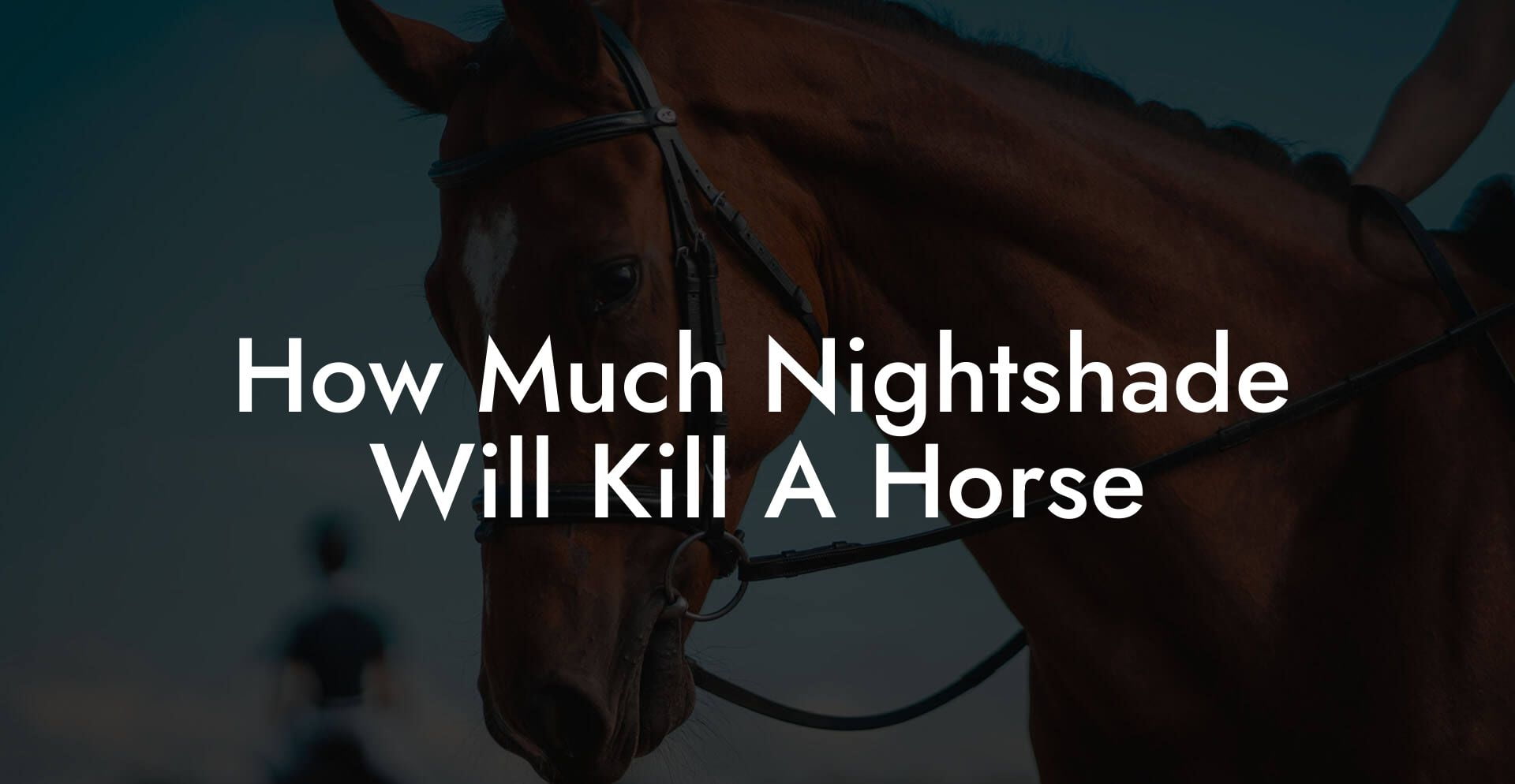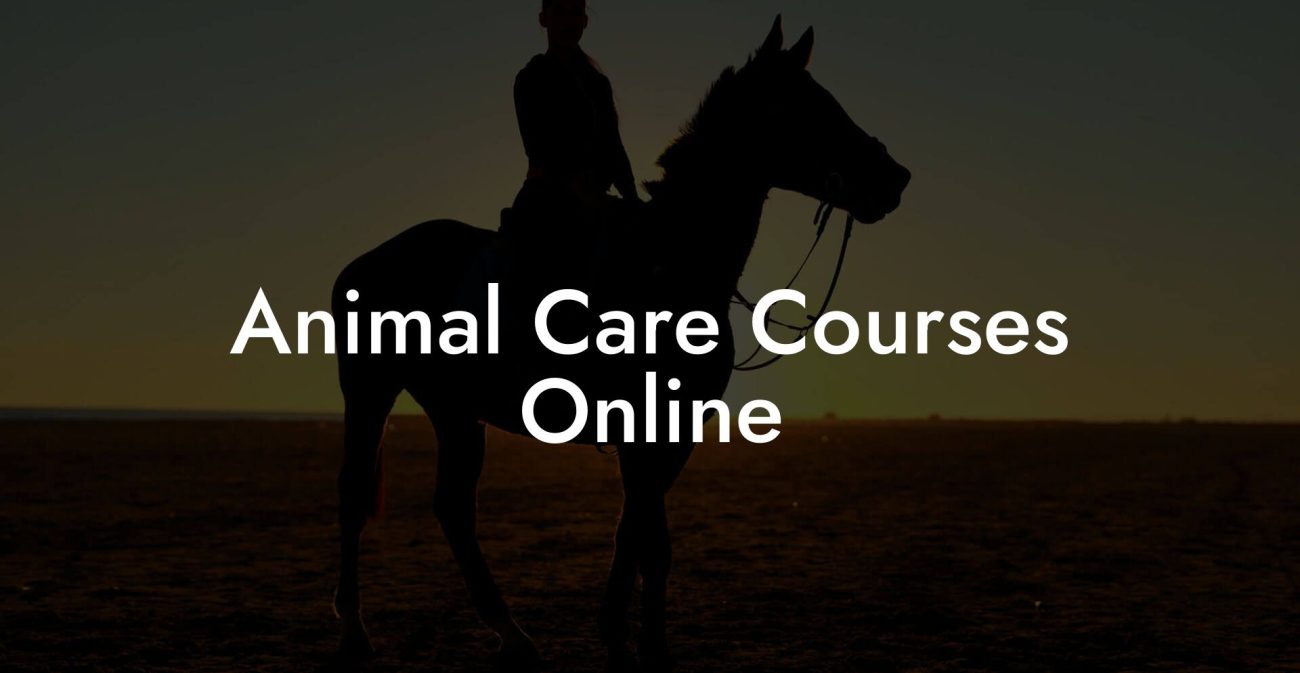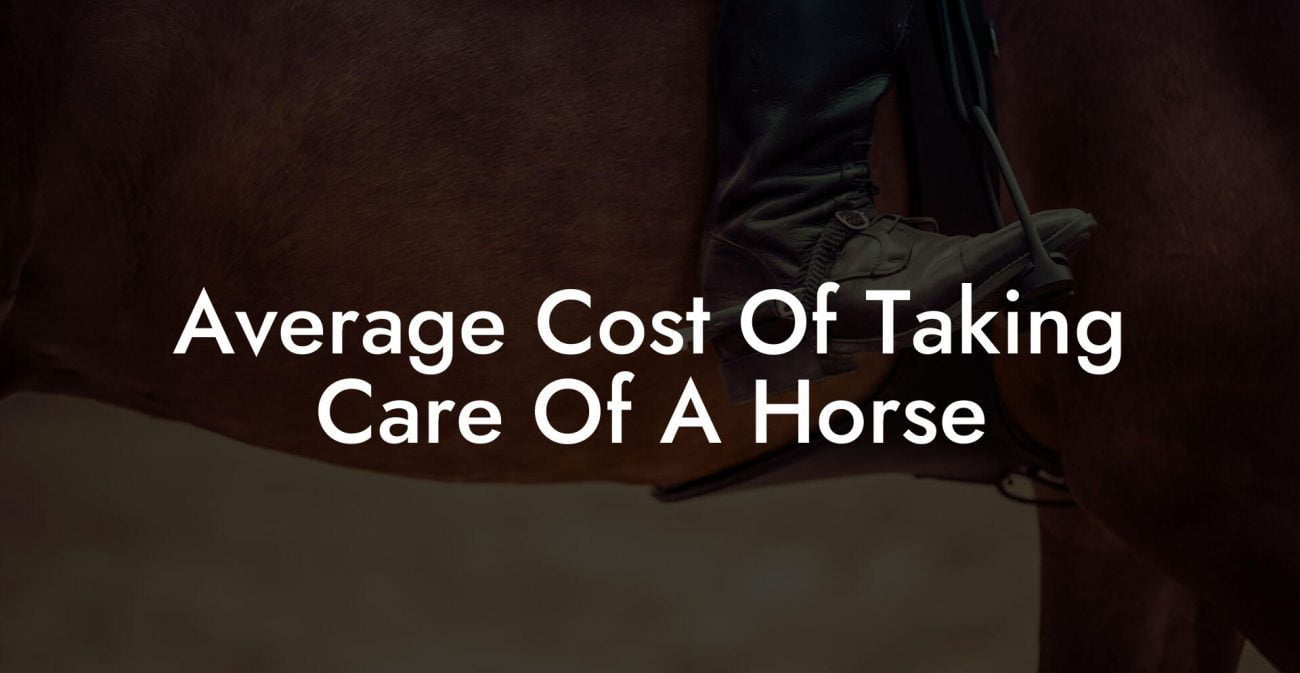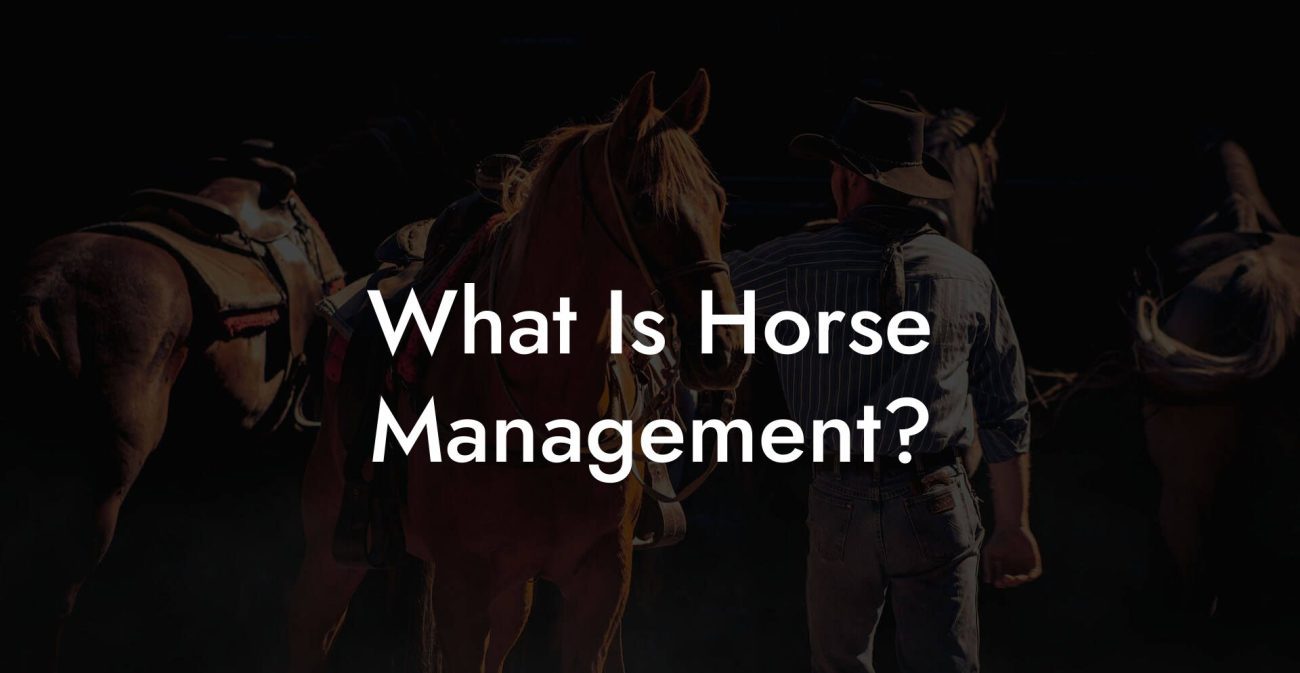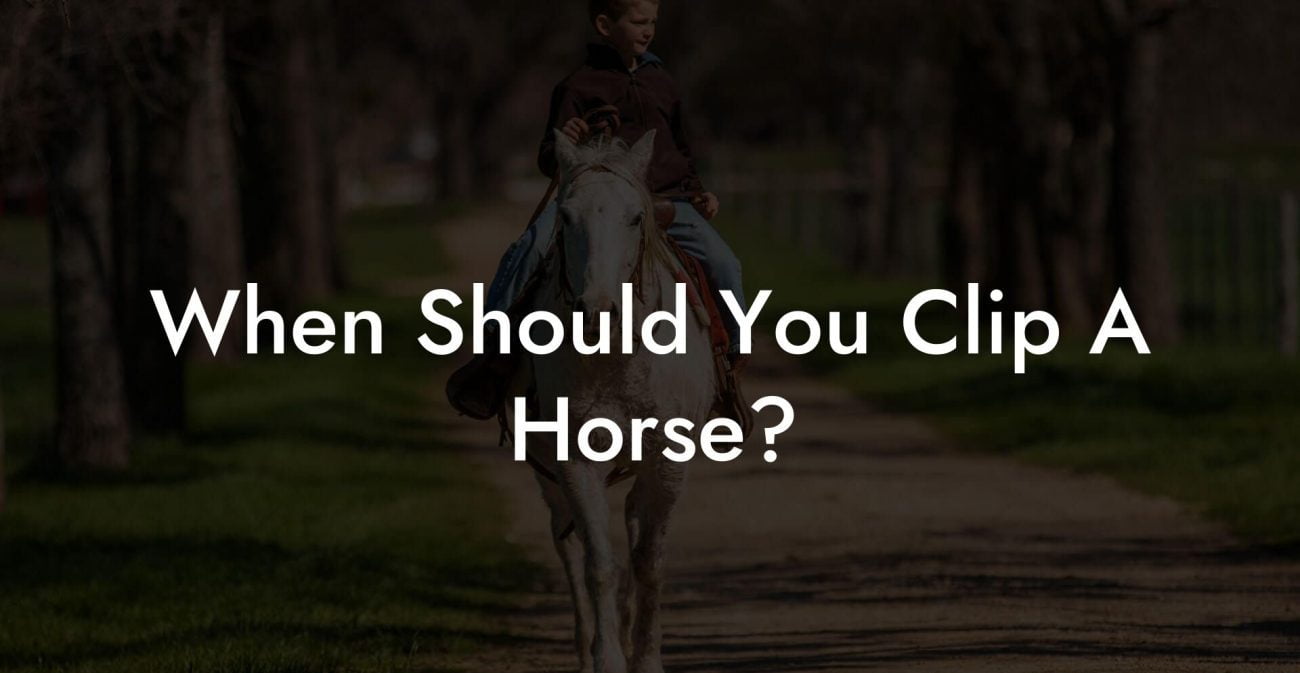Under a sky that’s as unpredictable as the latest meme trend, there’s a wild card lurking in your horse’s pasture—nightshade. Before you picture your majestic steed munching on a midnight snack of toxic treats, let’s dive into the real deal: how much nightshade will kill a horse. This isn’t your average equine care guide; it's the no-holds-barred, millennial-friendly lowdown on one of nature’s stealthiest toxins. Get ready to explore the fuzzy lines between botany, toxicology, and responsible horse-keeping, all spiced up with a dash of humor and plenty of practical advice.
Quick Links to Useful Sections
- The Enigma of Nightshade: Nature’s Deceptive Masterpiece
- Identifying Toxic Nightshade in Your Pasture: What to Look For
- The Science of Nightshade Toxicity: How Much is Too Much?
- Symptoms of Nightshade Poisoning in Horses: What to Watch For
- Immediate Actions and Veterinary Strategies for Nightshade Exposure
- Prevention Strategies: Keeping Your Horse Safe from Nightshade
- Integrative Approaches: Navigating Nightshade Challenges with Modern & Holistic Care
- Resources and Community Support: Your Next Steps
- Nightshade Toxicity FAQs: Your Most Pressing Questions Answered
- Your Equine Health Odyssey: From Awareness to Action
The Enigma of Nightshade: Nature’s Deceptive Masterpiece
Nightshade, part of the Solanaceae family, is like the trickster of the plant world. While some members of this group—think tomatoes and potatoes—are pantry staples, others wear a darker crown. Bittersweet nightshade (Solanum dulcamara) and black nightshade (Solanum nigrum) are notorious for their potential toxicity, especially when ingested by horses. Unlike your average vine or weed, nightshade comes with a warning label written in nature’s own cryptic hand.
For equine caretakers wanting to keep their four-legged friends safe, understanding nightshade is just as crucial as knowing the proper riding techniques or the best TikTok hacks for horse grooming. Nightshade plants may look innocuously beautiful with their delicate purple, yellow, or red berries, but don’t be fooled—ingesting even a small amount can trigger serious health issues in horses. This guide is your antidote to misinformation and the dos and don’ts of managing these stealthy plants.
In this section, we’ll break down the mysterious allure of nightshade, exploring its natural habitat, its role in folklore, and why its deceptively attractive appearance can make it the perfect candidate for an equine health hazard. If you’ve ever wondered how a plant that looks like it belongs in a dainty flower crown can pack a toxic punch, you’re in the right place.
Identifying Toxic Nightshade in Your Pasture: What to Look For
The first step in protecting your horse is knowing how to spot nightshade before it adds an unwanted zing to your equine’s diet. Nightshade plants are masters of disguise, blending into the background of lush pastures and wild meadows. They typically feature small, star-shaped flowers and shiny berries that range in color from deep purple to bright red. However, their aesthetic appeal hides a dangerous secret.
Equine owners should pay close attention to the following characteristics:
- Leaf Shape and Texture: Nightshade leaves are generally oval with smooth edges, often growing in clusters that can mimic common forage plants.
- Flower Appearance: The tiny, bell-shaped or star-like blooms might be overlooked, but their presence near berry clusters is a tell-tale sign.
- Berries: Small and glossy, the berries are the most deceptive element. They’re alluring to some animals, though in horses they are a recipe for disaster if ingested in sufficient quantity.
It’s important to remember that not all nightshade species are created equal. For example, while the deadly nightshade (Atropa belladonna) is infamous for its toxicity in humans and animals alike, horses are more commonly exposed to variations like bittersweet nightshade, especially in regions where these plants thrive in damp, shaded areas.
By familiarizing yourself with the visual cues of these plants, you’re taking a proactive step in pasture management. This knowledge not only helps in early detection but also empowers you to guide your equine friends away from potential toxic hotspots. Keep an eye out during your daily rounds in the pasture, and consider enlisting the help of local agricultural extensions if you believe the danger is growing.
The Science of Nightshade Toxicity: How Much is Too Much?
Now, let’s address the million-dollar question: How much nightshade will kill a horse? The answer isn’t as simple as a magical number because toxicity hinges on several factors including the species of nightshade, the part of the plant ingested, and the overall health and size of the horse. Essentially, nightshade toxins—mainly solanine and related alkaloids—can wreak havoc on the nervous system and gastrointestinal tract.
Research suggests that even a small dose of solanine can be dangerous. For horses, ingesting roughly 0.5 to 1 gram of solanine per kilogram of body weight can lead to symptoms ranging from mild gastrointestinal upset to severe neurological complications. Unfortunately, pinpointing the exact lethal dose is difficult because of variable concentrations in the plant and differences among individual horses. Nevertheless, it's best to err on the side of caution.
To put it in perspective, even a few berries—as few as 10 to 15, depending on your horse’s size—could be enough to trigger symptoms of toxicity if the berries are particularly potent. That’s why equine professionals strongly advise against letting horses graze near or consume any part of the nightshade plant. The seemingly “cute” little berries can quickly turn into a toxic cocktail that disrupts normal heart rate, causes respiratory distress, and in worst-case scenarios, leads to death.
While veterinary toxicologists continue to refine our understanding of these toxic thresholds, the consensus is clear: there is no safe amount of nightshade for your horse. This section underscores the importance of preventive measures and careful pasture monitoring to avoid even accidental ingestion.
Symptoms of Nightshade Poisoning in Horses: What to Watch For
Recognizing the early warning signs of nightshade poisoning is paramount. Horses can be stoic creatures, so subtle cues are easy to miss amid the hustle of barn life. The toxic compounds in nightshade can manifest in a range of symptoms that may initially be mistaken for common issues like colic or mild digestive upset.
Common symptoms of nightshade ingestion include:
- Gastrointestinal Distress: Expect drooling, difficulty swallowing, diarrhea, and abdominal pain as the body attempts to rid itself of the toxins.
- Nervous System Irregularities: Restlessness, staggering, dilated pupils, and in severe cases, seizures may indicate that the toxins are affecting the central nervous system.
- Cardiovascular Effects: Abnormal heart rhythms or a rapid heart rate are potential red flags, especially if accompanied by other symptoms.
- Respiratory Issues: Labored breathing or a noticeable struggle to take a breath can be life-threatening if not addressed promptly.
An important tip for horse owners: Time is of the essence. If you notice any of these symptoms shortly after allowing your horse to graze, it’s crucial to contact a veterinarian immediately. In many cases, prompt treatment can mitigate the severity of the poisoning. However, delaying care might give the toxins enough time to take a fatal toll on your horse’s delicate systems.
Because the symptoms of nightshade poisoning might mimic other ailments, maintaining a high level of vigilance is key. Keep your pasture clear of any suspicious plants, and educate your staff on what to look out for. Early detection and immediate intervention are your best defenses against a potentially fatal outcome.
Immediate Actions and Veterinary Strategies for Nightshade Exposure
Discovering that your horse may have ingested nightshade is every owner’s worst nightmare, but how you respond in the aftermath can make all the difference. The first rule of thumb? Don’t panic. Instead, act swiftly and methodically to safeguard your horse’s health.
Here’s a step-by-step guide on what to do in case of suspected nightshade poisoning:
- Remove Access: Immediately stop your horse from grazing in the affected area to prevent further ingestion of toxic material. If possible, secure the area to keep other horses safe.
- Call Your Veterinarian: As soon as you observe any symptoms, contact a veterinarian who has experience with equine toxicology. Time is critical when it comes to neutralizing the toxin.
- Provide Supportive Care: Based on your vet’s guidance, your horse may require induced vomiting, activated charcoal, or intravenous fluids to help absorb and eliminate the toxin from its system.
- Monitor Closely: Continuous observation is crucial. Keep a close eye on vital signs such as heart rate, respiratory rate, and mental status. Document any changes to provide your vet with accurate information.
Veterinary intervention for nightshade poisoning often involves a combination of emergency treatments. For instance, activated charcoal acts as a chemical sponge, binding with any remaining toxins in the gut, while fluid therapy ensures that the body remains hydrated and can flush out harmful substances. In severe cases, medications to control seizures, manage cardiac function, or reduce inflammation might be administered.
The key takeaway is that early recognition, rapid veterinary intervention, and supportive care are the pillars that can help your horse overcome the acute phase of nightshade toxicity. By acting quickly, you’re not only saving a life but also gathering important insights into how to better protect your horses in the future.
Prevention Strategies: Keeping Your Horse Safe from Nightshade
The best cure, as they say, is prevention. For equine owners, maintaining a vigilance that borders on the detective level is essential when it comes to keeping nightshade—and other toxic plants—a thing of the past in your pasture. Proactive measures can save you from a stressful emergency and ensure your horse enjoys a toxin-free environment.
Here are some practical strategies to keep your pasture safe:
- Regular Pasture Inspections: Make it a habit to walk through your fields regularly, especially in shaded or damp areas where nightshade thrives. Use a field guide or mobile app designed for identifying toxic plants—it’s like having a digital botanist in your pocket.
- Educate Your Team: Whether you’re riding solo or managing a larger stable, ensure that everyone who interacts with your horses can identify toxic plants. Hold mini-training sessions or even create shareable cheat sheets to keep the information fresh.
- Strategic Weed Control: Work with a local agricultural extension service or a professional landscaper to implement effective weed management practices. Removing potential threats before they become a problem is always more effective than playing catch-up after an incident.
- Safe Forage Alternatives: Encourage grazing on known safe plants by managing pasture rotation. If certain areas are prone to harboring nightshade, consider restricting access or reseeding with less toxic, equine-friendly grasses.
- Barriers and Fencing: In regions where nightshade is a recurrent issue, installing physical barriers or strategic fencing can help keep horses away from high-risk areas while still providing them with ample grazing space.
Prevention isn’t just about protecting physical health—it’s also about peace of mind. By actively managing your pasture and staying knowledgeable about the local flora, you create an environment where your horse can graze safely and happily. It’s all about balancing nature’s wild beauty with smart, proactive care.
Moreover, networking with local equine communities or agricultural experts can provide timely updates on regional issues with nightshade. Sharing experiences and tips not only enriches your own preventative plan but also strengthens the overall safety net for every horse in the region.
Integrative Approaches: Navigating Nightshade Challenges with Modern & Holistic Care
The fight against nightshade toxicity isn’t solely about emergency responses—it also calls for a balanced, integrative approach to equine health. Just like any holistic wellness plan, this strategy embraces both modern veterinary care and natural remedies to create the ultimate safety net for your horse.
Think of it as a mashup playlist between cutting-edge equine science and time-tested practices. Complementary therapies, such as herbal detoxification methods (always under professional supervision), can support your horse’s recovery if it’s already had a close encounter with nightshade. Additionally, optimizing your horse’s overall nutrition by incorporating targeted supplements helps in building its resilience against toxins.
By combining:
- Vetted Medical Care: Rely on professional veterinarians who understand equine toxicology and are up-to-date with the latest treatment protocols.
- Holistic Practices: Integrate stress-reducing techniques, proper hydration, and nutrition that promotes liver health to help detoxify the body naturally.
- Ongoing Monitoring: Use modern diagnostic tools such as blood tests and biofeedback systems that can monitor the subtle impacts of toxins on your horse’s system.
This integrative approach is not about replacing traditional interventions—it’s about enriching them. When your horse is generally healthier, it’s more resilient to challenges, including accidental ingestion of toxins. In this vein, routine care isn’t just preventive; it’s transformative, elevating your horse’s overall quality of life.
Embracing both high-tech veterinary solutions and natural care practices is the future of equine health management. It ensures that, come rain or shine (or an unexpected encounter with nightshade), your horse is always ready to trot its best, safe, and sound.
Resources and Community Support: Your Next Steps
Even the savviest horse owner can benefit from a community of like-minded equine enthusiasts and experts. When grappling with the nuanced issues of nightshade toxicity, your journey is best undertaken with a trusted support network. Whether you’re seeking advice on pasture management or need the latest research on equine toxicology, plenty of resources are at your fingertips.
Consider joining local equine associations, online forums, and social media groups dedicated to horse care. These platforms provide a safe space to exchange experiences, debunk myths, and crowdsource recommendations for veterinary professionals who specialize in toxicology. Additionally, many agricultural extensions and veterinary schools offer workshops and informational sessions that keep you updated on the latest prevention and treatment strategies.
Remember, staying educated and connected is your best bet for shielding your horse from nightshade and other toxic threats. As you traverse the journey from awareness to action, lean on these resources. Engage in meaningful conversations, share your experiences, and advocate for a safer, well-informed equine community. There’s power in numbers, and together, we can ensure that every horse enjoys the pasture without a toxic twist.
Nightshade Toxicity FAQs: Your Most Pressing Questions Answered
We’ve broken down some of the most common questions horse owners ask about nightshade toxicity. From dosage details to emergency interventions and prevention tips, these FAQs are here to clear up the confusion and empower you with actionable knowledge.
1. What exactly is nightshade and why is it dangerous for horses?
Nightshade refers to several plants in the Solanaceae family, many of which contain toxic alkaloids like solanine. While some nightshades are harmless or even edible under controlled conditions, others—especially bittersweet and black nightshade—can cause severe neurological and gastrointestinal issues in horses.
2. How much nightshade does it take to harm or kill a horse?
There isn’t a one-size-fits-all answer, but even a small number of toxic berries (as few as 10-15 in particularly potent cases) can cause serious health issues. The precise toxic dose depends on the concentration of solanine and the individual horse’s size and overall health.
3. What are the first signs of nightshade poisoning in horses?
Early symptoms include drooling, difficulty swallowing, gastrointestinal upset, restlessness, and changes in heart rate or breathing. Recognizing these signs early can be critical for a successful recovery.
4. Is there any safe way for my horse to be exposed to nightshade?
No safe threshold exists; therefore, it’s crucial to prevent any accidental ingestion by managing pastures and ensuring that horses do not have access to areas where nightshade is growing.
5. What emergency actions should I take if my horse ingests nightshade?
Immediately restrict access to the toxic plant, contact your veterinarian, and follow their recommendations—this may include inducing vomiting, administering activated charcoal, or providing supportive care such as IV fluids.
6. Can nutritional and holistic interventions help if my horse suffers from nightshade poisoning?
Yes, once your horse is stabilized through conventional veterinary care, integrative and nutritional support can help mitigate the damage and accelerate recovery.
7. How do I keep my pasture free of toxic nightshade?
Regular inspections, proper weed management, educational outreach among your staff, and, if necessary, professional help from agricultural extensions can go a long way in minimizing the risk.
8. Are there any long-term effects I should be aware of even after recovery?
In some severe cases, residual organ damage or neurological issues may persist if treatment is delayed. Continuous monitoring and follow-up care with your veterinarian are essential.
Your Equine Health Odyssey: From Awareness to Action
Navigating the world of equine care is a journey filled with unexpected twists—sometimes in the form of toxic berries floating in your pasture. By understanding the risks associated with nightshade, identifying its signs, and knowing how to act fast, you’re taking proactive steps to protect your horse’s health. This guide has armed you with the details you need, from the science behind the toxins to the integrative approaches that combine modern veterinary care with holistic strategies.
Every horse owner deserves peace of mind, and staying informed is a powerful way to achieve that. Beyond the immediate steps outlined here, fostering a community of informed, resourceful caretakers can ensure that every equine life is safeguarded against nature’s occasional mischief. From routine pasture inspections to building relationships with veterinary experts, your actions today can prevent tomorrow’s emergencies.
Embrace this equine health odyssey with confidence, knowing that every precaution you implement paves the way for a safer, more nurturing environment for your horse. Whether you’re a seasoned rider or new to the saddle, your vigilance against nightshade is a testament to your dedication. The journey is as much about prevention as it is about innovation and community support—each step forward is a step toward a thriving, toxin-free pasture.
So, equip yourself with knowledge, lean on the community around you, and never hesitate to reach out for professional guidance. With this comprehensive guide as your roadmap, you’re not just a caretaker—you’re an empowered guardian of your horse’s health, ready to tackle any challenge that comes your way. Keep learning, stay observant, and remember: in the world of equine care, informed action is the ultimate key to success.

